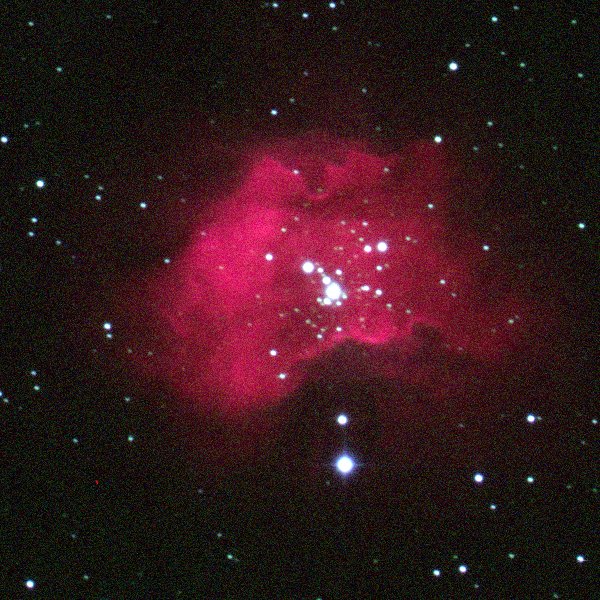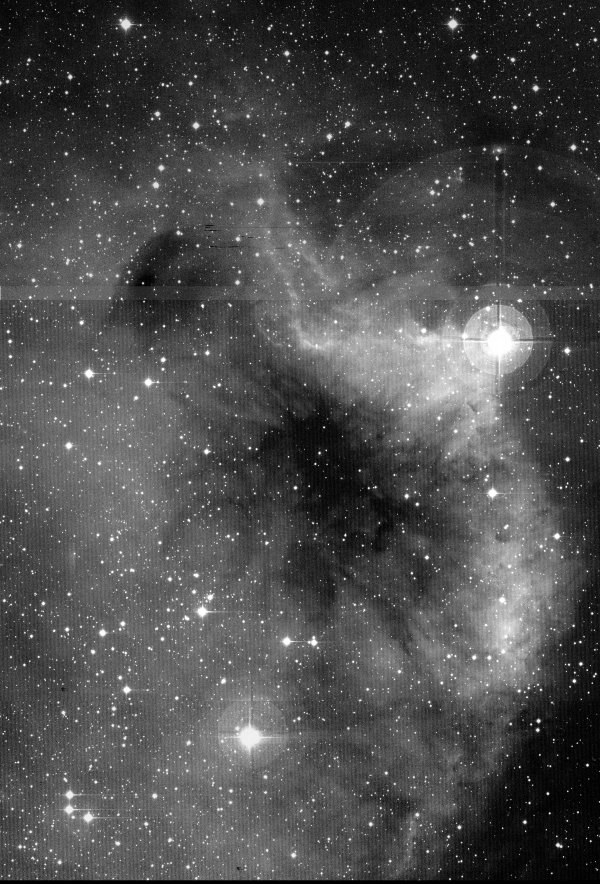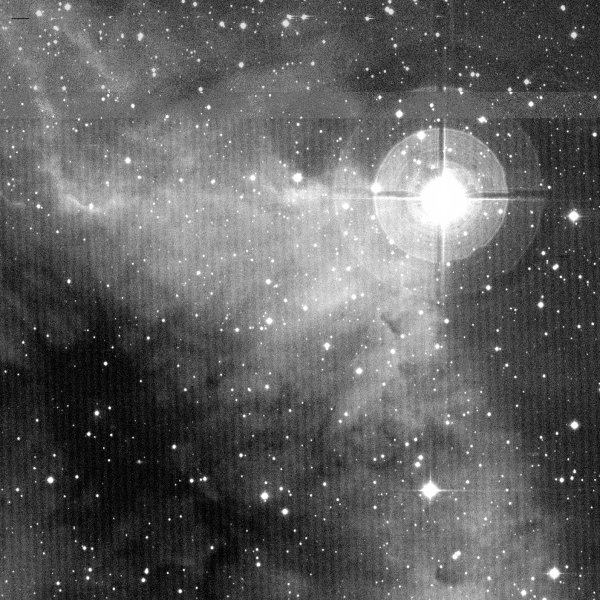Microsoft released a beta version of its much heralded WorldWide Telescope a couple of weeks ago and this week I finally downloaded it and tried it out.
It's a relatively small 20 megabyte download. I have a new computer purchased this year with 2 gigabytes of RAM, the latest graphics drivers and the required .NET 2.0 framework already installed, so I had no problem running the application.
This is beta software, and if you don't have the right configuration, reports suggest that you may get a broken application with blank images and incomprehensible error messages. Presumably Microsoft will add a more comprehensive system check and error recovery system to the application before its final release.
If you've used the Google Earth / Google Sky desktop application, you'll find that the WorldWide Telescope interface is familiar. Like the Google application, you can pan and zoom over vast amounts of image data downloaded automatically from a tile server.
The Microsoft interface is slicker than Google Sky's and benefits from the fact that it is explicitly designed for viewing astronomical data. It also uses a special projection called TOAST that is designed to avoid Google's display problems in the polar regions.
Possibly the best feature is the elaborate functions to create Guided Tours. There is a wonderful guided tour of the Ring nebula (the planetary nebula in Lyra) given by a six-year-old boy from Toronto. I showed it to my six-year-old daughter and she immediately wanted to know if she could create her own tour. Curtis Wong, the WorldWide Telescope's product manager, is wisely emphasizing the creation of guided tours as a major feature:
We wanted not only to enable a seamless exploration, but also the ability for people to create and share stories. People have been making up stories about the sky since the beginning of time ... Now, with WorldWide Telescope, we have an opportunity for people in countries around the world to capture those stories and share them with others.
The actual data available through the WorldWide Telescope is inadequate, however. The search system is missing even basic catalog data (searching for Sharpless nebula designations like Sh 2-25, for example, turn up nothing, even though the system has several images of the Lagoon nebula available). The system provides the DSS, SDSS and Douglas Finkbeiner's all-sky hydrogen-alpha image as overlays. DSS is, sadly, still the best all sky visual data available even though it is decades old, and the full colour SDSS data looks brilliant, but SDSS by design only covers the north galactic cap, well away from most interesting objects in the Milky Way. The possibility for creating full colour SuperCOSMOS visual images for the southern hemisphere (south of declination 0°) has not been exploited, even though many of the most interesting objects in the Milky Way are located there.
The real lack is in the narrow-band imaging. The IPHAS and SuperCOSMOS hydrogen-alpha images are not available. Outside the visual spectrum, the situation is even worse. The infrared and radio imaging is decades old, and does not include the much more detailed imaging available for the galactic plane, including the Spitzer and MSX survey data in infrared and the Effelsberg 11 cm, Parkes or Canadian Galactic Plane Survey data available at radio frequencies.
The over all result of the missing data is that the WorldWide Telescope fails to showcase most of the interesting survey imaging done over the last couple of decades and makes the sky look much less interesting and mysterious than we know that it is.
My hope is that Microsoft and the various professional astronomers associated with the WorldWide Telescope project will work hard over the next few months to make more current data available through what has the potential to be a truly amazing and useful interface.




